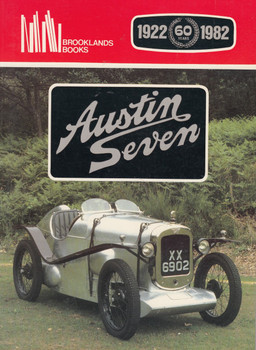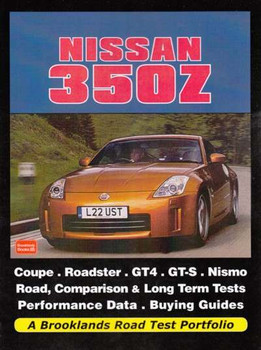Description
A Brooklands Road Test Compilation by R.M.Clarke and Tony Beadle, Softbound, 157 Pages, ISBN: 9781855208803
Our portfolios covering pre-war Austin models have now been out of print for many years. In fact, we sold the last copy of our most recent book (Austin Seven 1922 — 1982) as long ago as 1994, so the time for us to take another look at the subject of the much-loved 'Baby' Austin was well overdue. As well as selecting some of the best articles published in our earlier Austin Seven and Ten collections, we have taken this opportunity to update the contents by including a number of items from more recent publications, the new additions once again demonstrating the enduring appeal of these classic little cars.
As always, we are indebted to a number of the world's leading motoring journals for allowing us to reproduce their copyright road tests and other articles in this reference book. In this instance our thanks go to the publishers of: Autocar, Car South Africa, Classic Cars, Classic and Sportscar, Garage and Motor Agent, Light Car, Motor, NZ Classic Car, Practical Classics and Practical Motorist.
R.M. Clarke
In much the same manner as Henry Ford's Model T had earlier helped to put America on wheels, Herbert Austin's diminutive Seven was intended to bring motoring within the reach of everyone in Britain. Both of these historic cars have their own individual design and engineering idiosyncrasies but they are rightly regarded with great affection by countless enthusiasts around the world. The Austin Motor Company was established at Longbridge, Birmingham, in 1906 and during the period leading up to the outbreak of hostilities in 1914 produced a number of unremarkable, but reliable cars. The factory expanded at an amazing rate in World War One, producing massive amounts of munitions and military equipment as the workforce increased almost tenfold. Like so many other industrialists of the period, by 1918 Herbert Austin had become an incredibly wealthy person due to lucrative wartime contracts.
Embracing the concept of mass production in order to keep the vast Longbridge plant viable, so in 1919 Austin introduced a slightly revamped version of the pre-war Twenty model. However, the Twenty was too expensive to sell in the quantities needed to keep the company profitable and by 1921 the business was in the hands of the receivers. Following a restructuring, Herbert Austin regained control and brought out the smaller Twelve in 1922. This was a very successful car which remained in production until 1935. Despite the good sales achieved by the Twelve, Austin decided that a cheaper, even more compact model was required. The task of designing this new car was given to eighteen-year-old Stanley Edge, a draughtsman who worked on the project at Herbert Austin's country house in order to avoid prying eyes at the factory. It was Edge who insisted on using a four-cylinder engine and he was responsible for creating the original quirky little open tourer which became universally known as the Austin Chummy.
By the spring of 1923 the engine capacity had been increased to 747cc (from 696cc) and it would stay the same size until production of the Seven came to an end in 1939. In the intervening years the specification evolved gradually as a variety of upgrades were incorporated to enhance the Seven's serviceability and performance. Body styles also proliferated, with various sports models and special saloons offered by a number of coachbuilders. From the outset the tiny Austin competed in races and rallies, winning awards for many years and overcoming the oft-quoted handicaps of its "unpredictable road holding and indescribable brakes" with aplomb. As a result of all this the Seven became a very fashionable car in the 1920s. The top-seller in its class, Herbert Austin's baby killed off practically every one of the cyclecars and lightweight models offered by rival manufacturers.
Improvements to the Seven range continued throughout the 30s, with the introduction of a long wheelbase version and the arrival of the Ulster and Ruby models among the high points. The slightly larger Austin Ten made its debut in 1932 and, although noted more for its ruggedness than its rapidity, this model instantly became another chart-topper for the company. More rounder styling appeared across the board in 1937, but World War Two halted civilian car production and marked the end for both the Seven and the Ten.
Tony Beadle

















